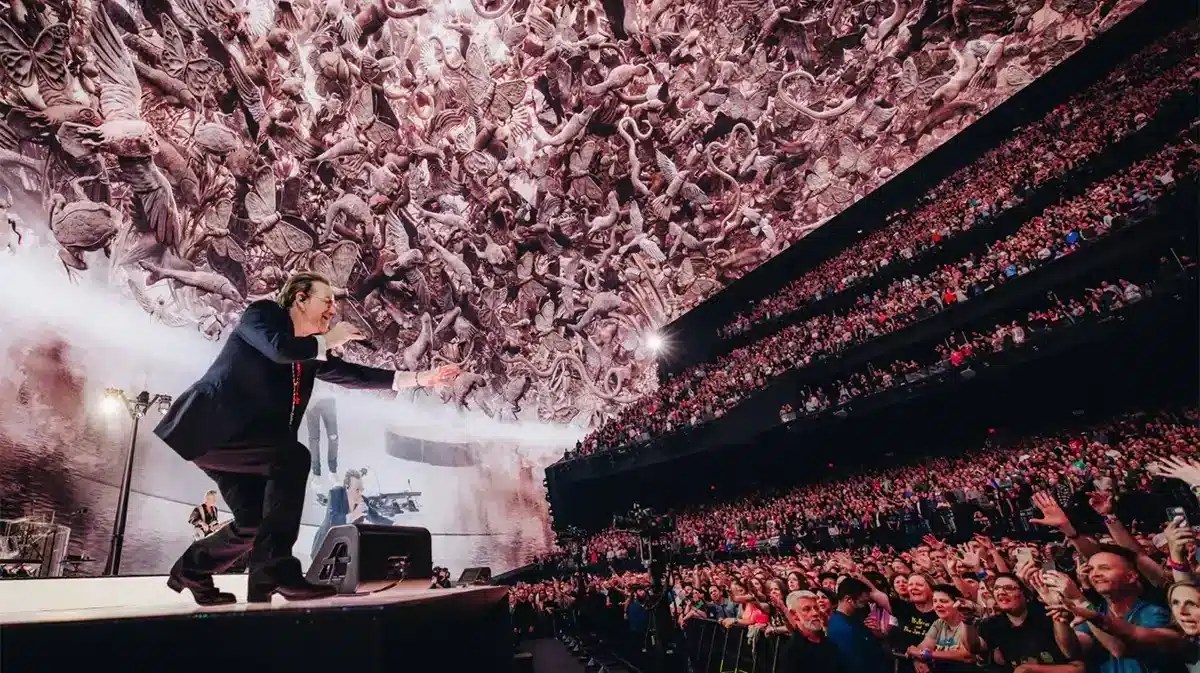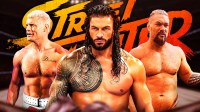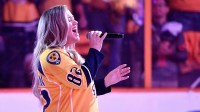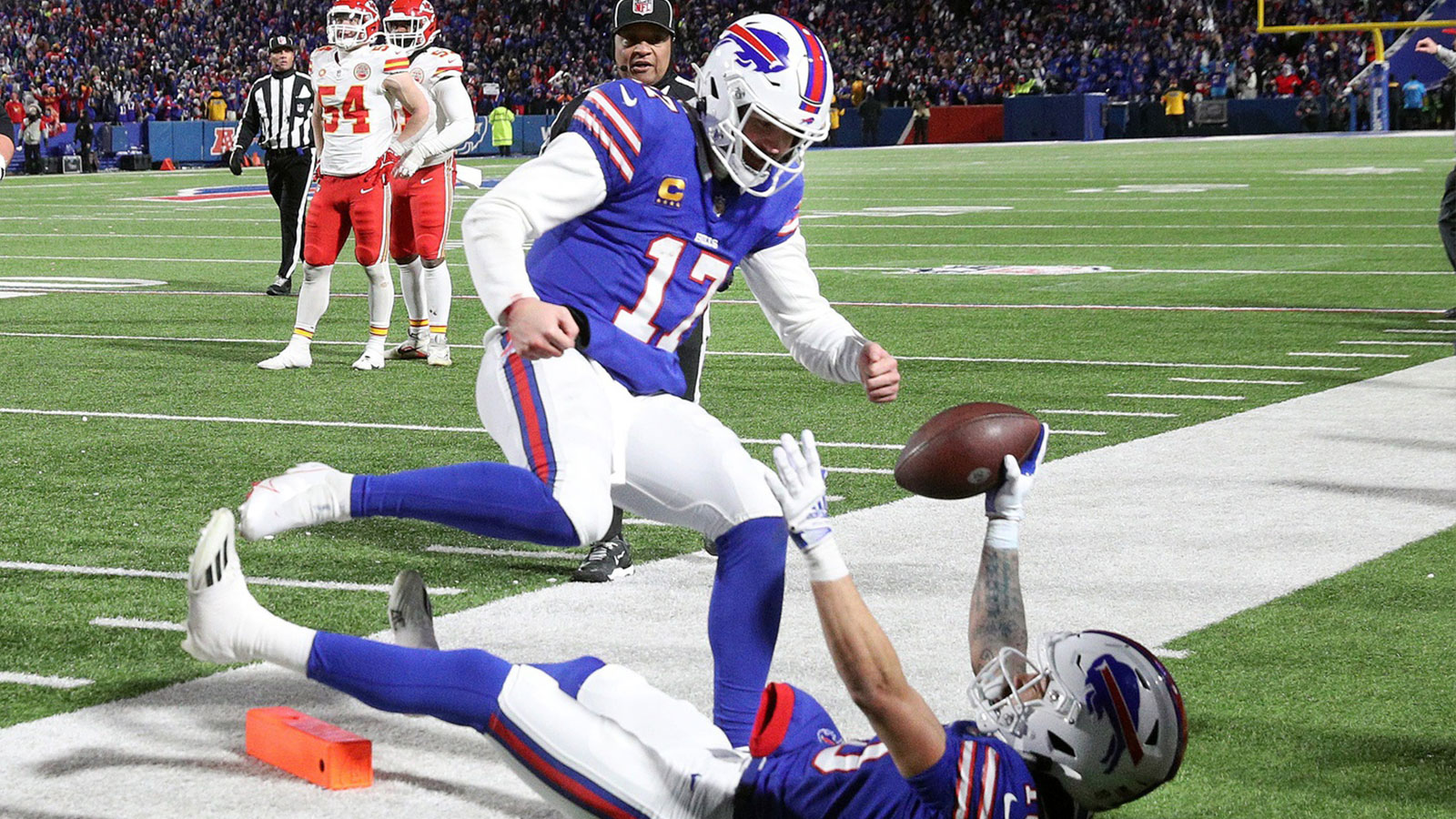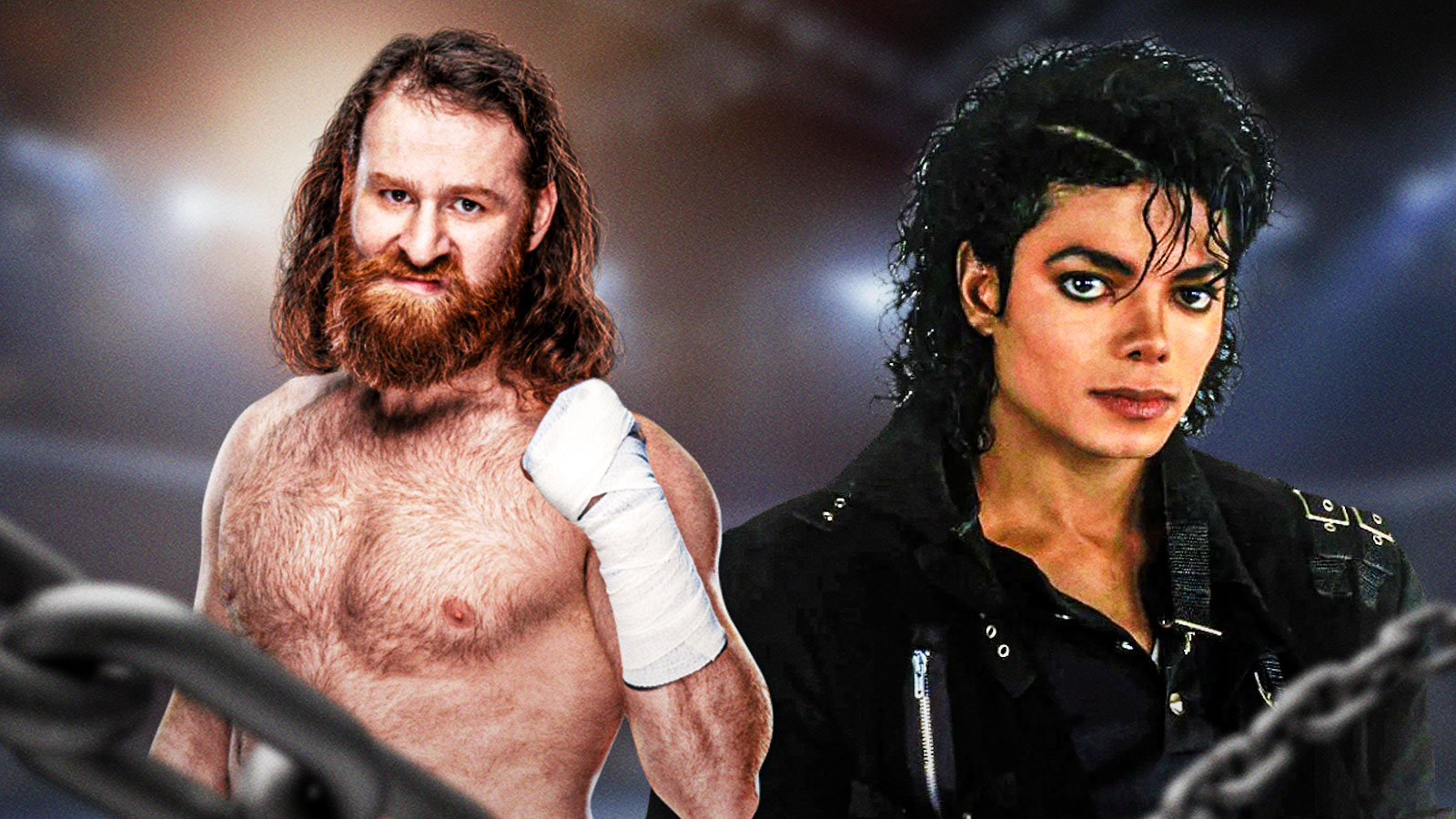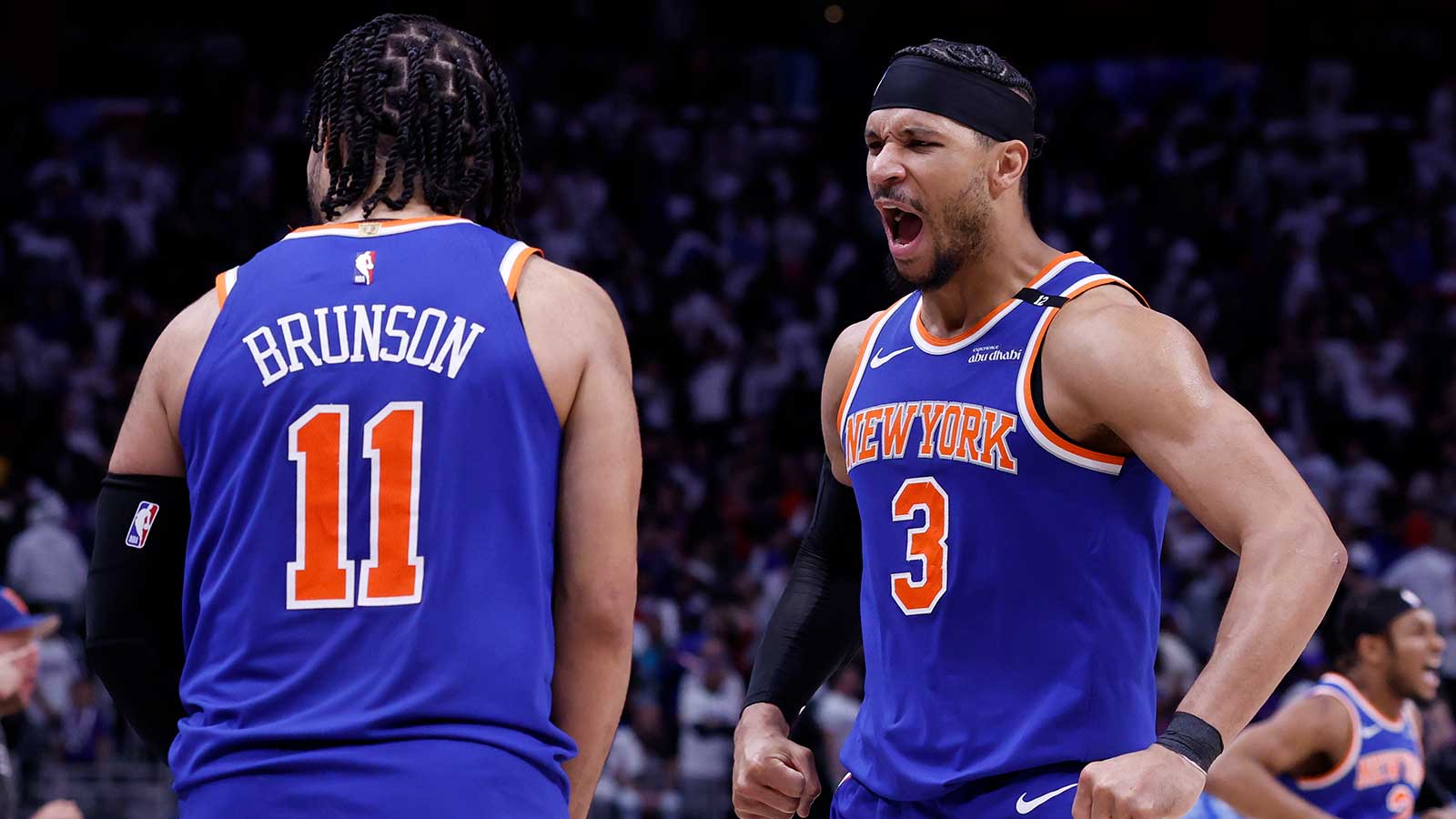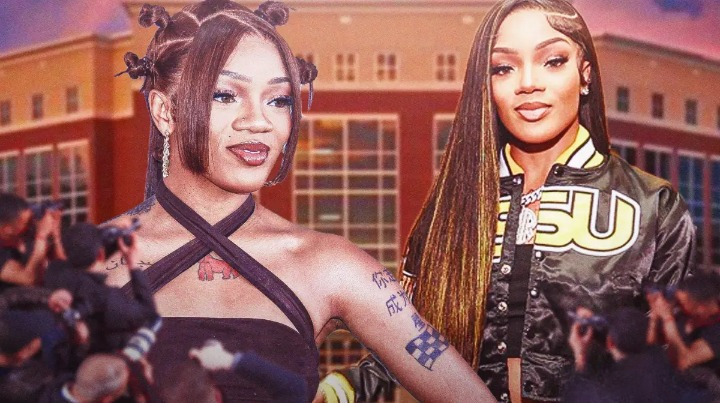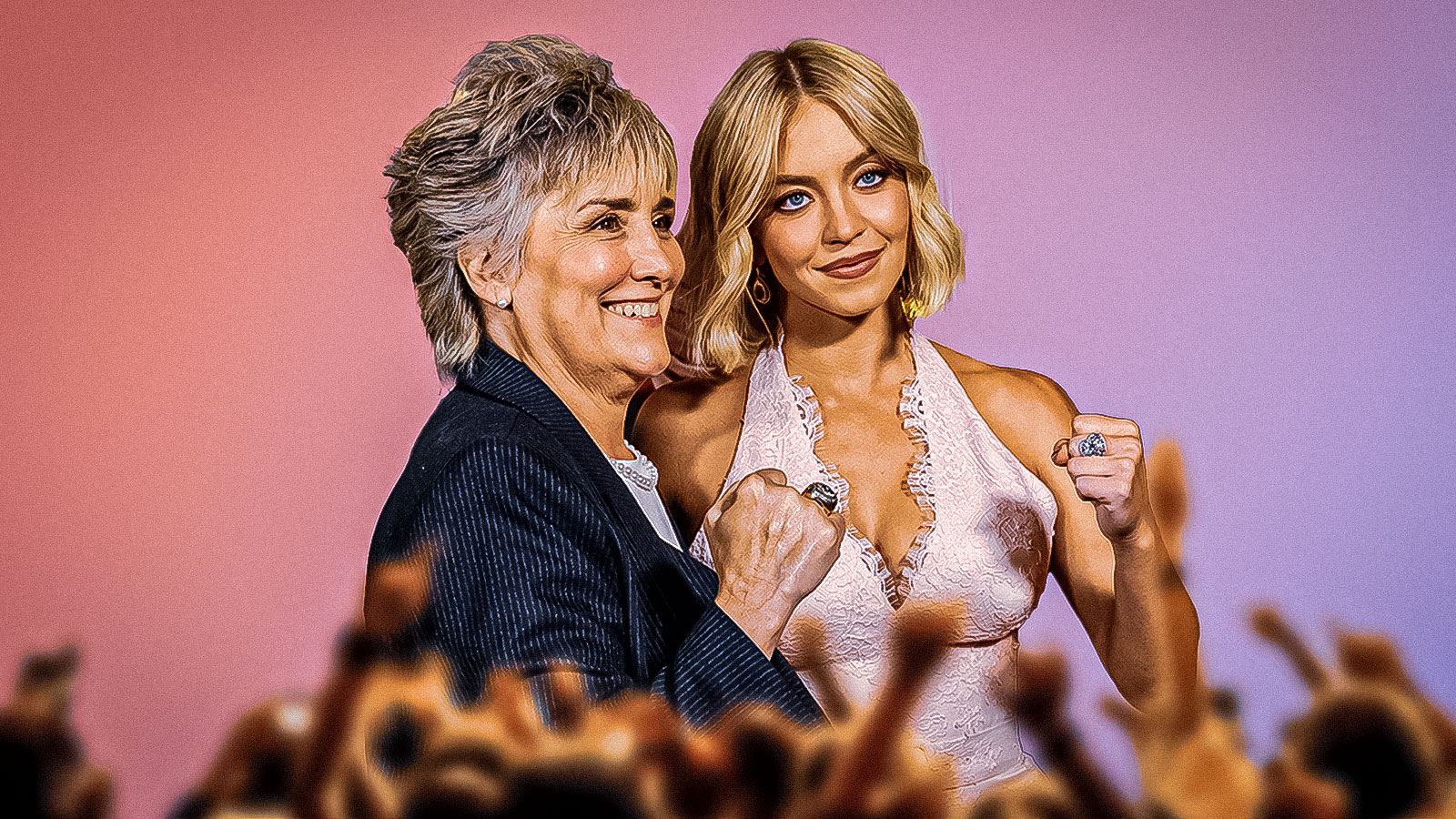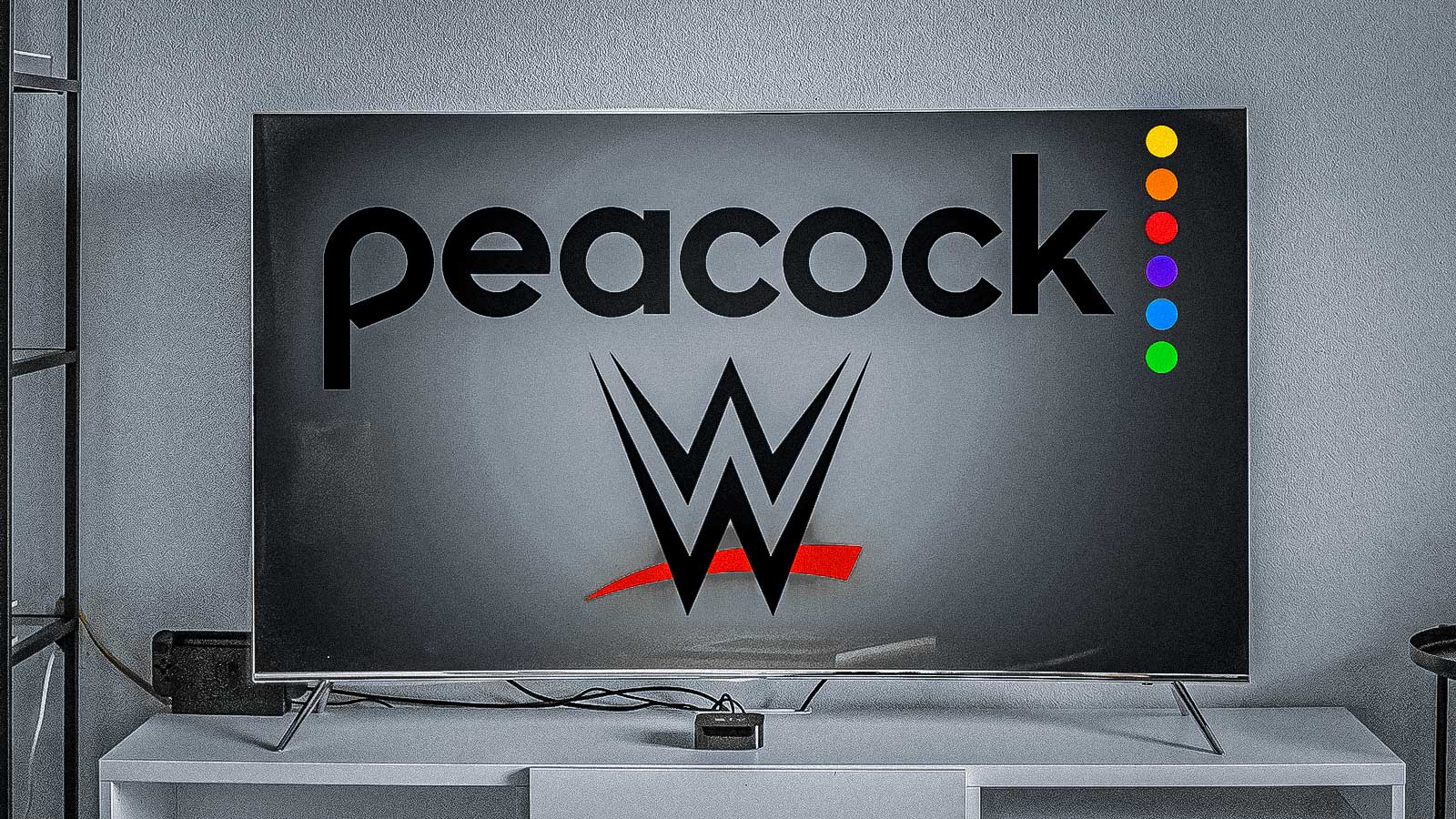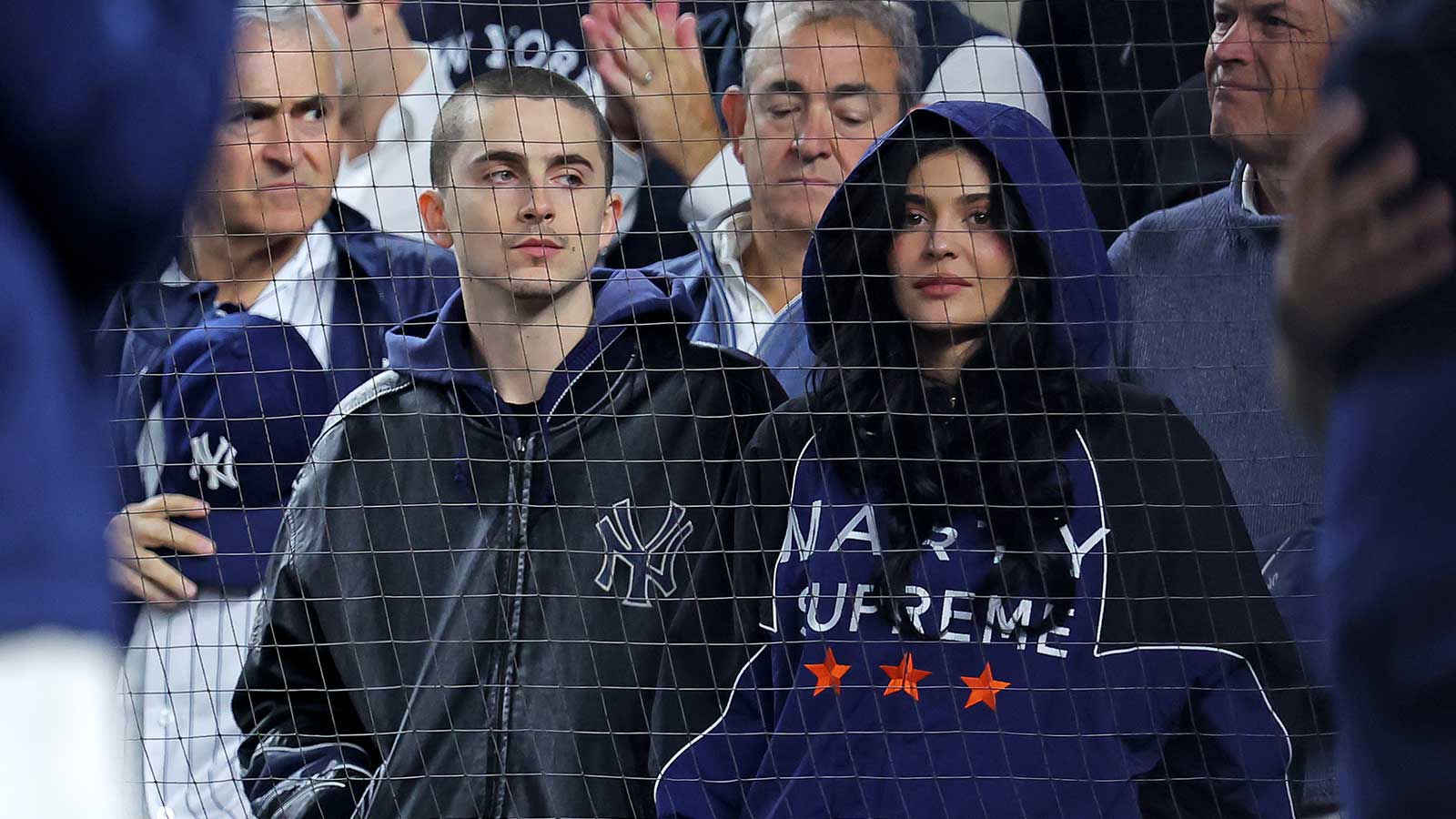U2 took on their most ambitious project to date, their Sphere residency, which is set to conclude this weekend.
Bono, The Edge, and Adam Clayton were joined by Bram van den Berg for the shows, who sat in for Larry Mullen Jr. After commencing on September 29, 2023, the final two shows will take place on March 1 and 2.
It's been a fast ride — the opening weekend feels like yesterday. The Sphere has brought many memorable highlights like hearing “So Cruel” live and their cover of “Don't Dream It's Over.”
All good things come to an end. ClutchPoints spoke with U2's stage designer, Ric Lipson, ahead of the band's residency conclusion. Lipson has worked extensively with U2, designing stages like the space station that the “360” tour's was, or the revolutionary “Innocence + Experience” tour (and its sequel).
During our chat, Lipson reflected on the beginnings of U2's Sphere residency, how Larry Mullen Jr.'s absence affected the stage setup, how the setlist was affected by Songs of Surrender, and how other artists can capitalize on U2's Sphere residency in the future.
U2 stage designer Ric Lipson Sphere exit interview
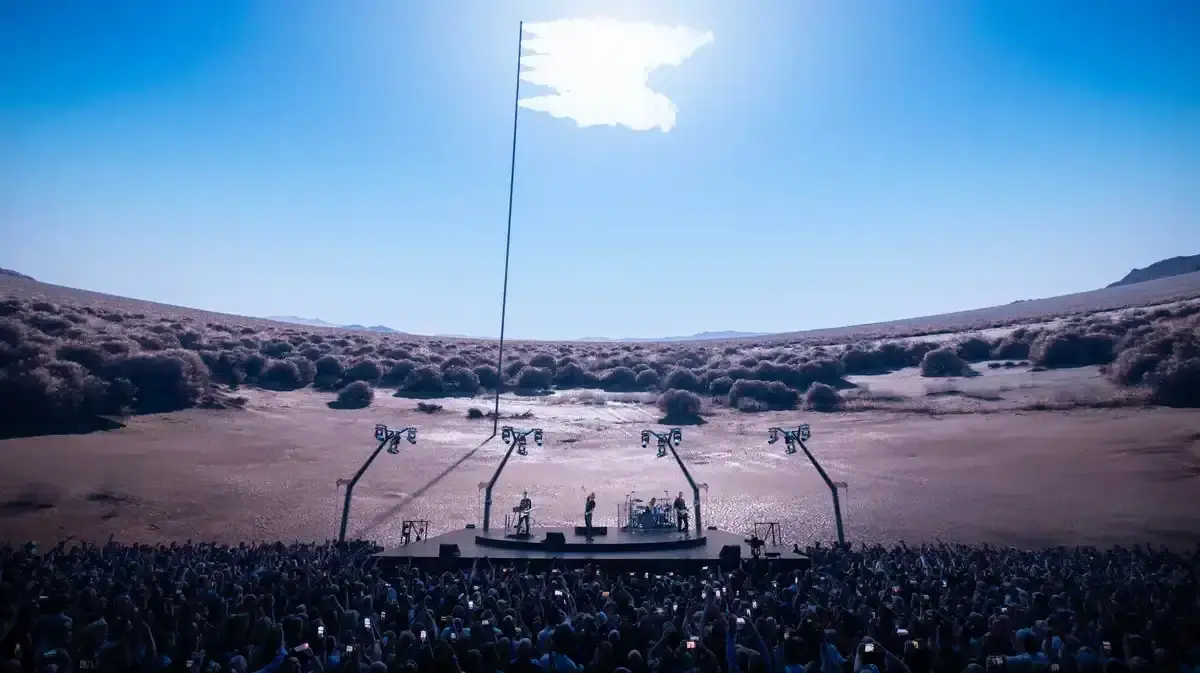
Note: This interview was conducted before U2's last four shows at the Sphere.
ClutchPoints: Last year at the Super Bowl, the first teaser for the Sphere shows was dropped, A year later, the Super Bowl just happened and the residency is concluding soon. What's this whole journey been like for you since you're so involved with it?
Ric Lipson: The studio [Stufish] has worked with U2 for many, many years, all the way back [to] the original “Zoo TV” [tour]. And obviously this is the 30 year anniversary of “Zoo TV.”
We've done many projects with U2, who — along with creative director Willie Williams — are always trying to further the art form and trying to find ways of breaking what they call the fourth wall and connecting with an audience in a different way. And, usually, that's through and via technology as a way of telling a story.
So it's not just technology for the sake of technology, but it's technology for the sake of sort of telling the story or the mood. And obviously, how do you reinvent “Zoo TV,” which, essentially, was one of the first shows that really used video in a live show and camera work and imagery.
30 years later to have a building that has essentially been built as a futuristic screen surface, that was really exciting. And obviously we've been talking about it for a while and working on it ahead of the Super Bowl from last year. So we've been involved in various guises with what the Sphere might be for many years.
And then when U2 decided that we're going to go there, this was really exciting because A.) we were going to be the first we would get to really explore what the venue could deliver for a show, and B.) it would allow the band to do something that they had not done. So that's the first bit of it.
To open any building or any place as the first is always an honor and for it to be something that's so groundbreaking is a double honor. So that was exciting and to celebrate 30 years of “Zoo TV” was amazing.
We're probably on show 36 because there's like two weekends left. I'm going to go next week and see the last two shows. It's been a journey.
We never intended there to be 40 shows. It was meant to be done before Christmas and it was just done so well and so many people have been so bowled over by it. It's just been another one of those amazing things to be part of.
CP: I know you're working closely with not just the band, but like you said, Willie Williams. You've worked on the “360” tour, “Innocence and Experience” tour, all these different tours with all different stage setups. So where do you come in in that process? Especially given that the Sphere is such a different thing, and the band is on a small stage and with the huge screen as a backdrop.
RL: Most of the projects start in a similar way. The band gets us all in a room — so there's Willie; the band themselves; Morleigh Steinberg, who's a choreographer and director that's worked with the band for many years [and is] married to Edge; Gavin Friday, long-standing creative director for U2; Sharon Blankson, who does all the wardrobe; Joe O'Herlihy, who's a sound guy [and] has been with them for 40 odd years; and then us as the sort of stage architects. Sometimes we bring in the production manager, Jake Berry.
[With the ] “Innocence + Experience” [tour], we were listening to the new music. So it's, “Here's the new music, this is the story we're trying to tell. It's a story of four guys growing up in Dublin in the Troubles becoming men, going to London, blah, blah, blah.” So that's how that show started. And then we start to think about what does it mean? What does the meaning behind the lyrics.
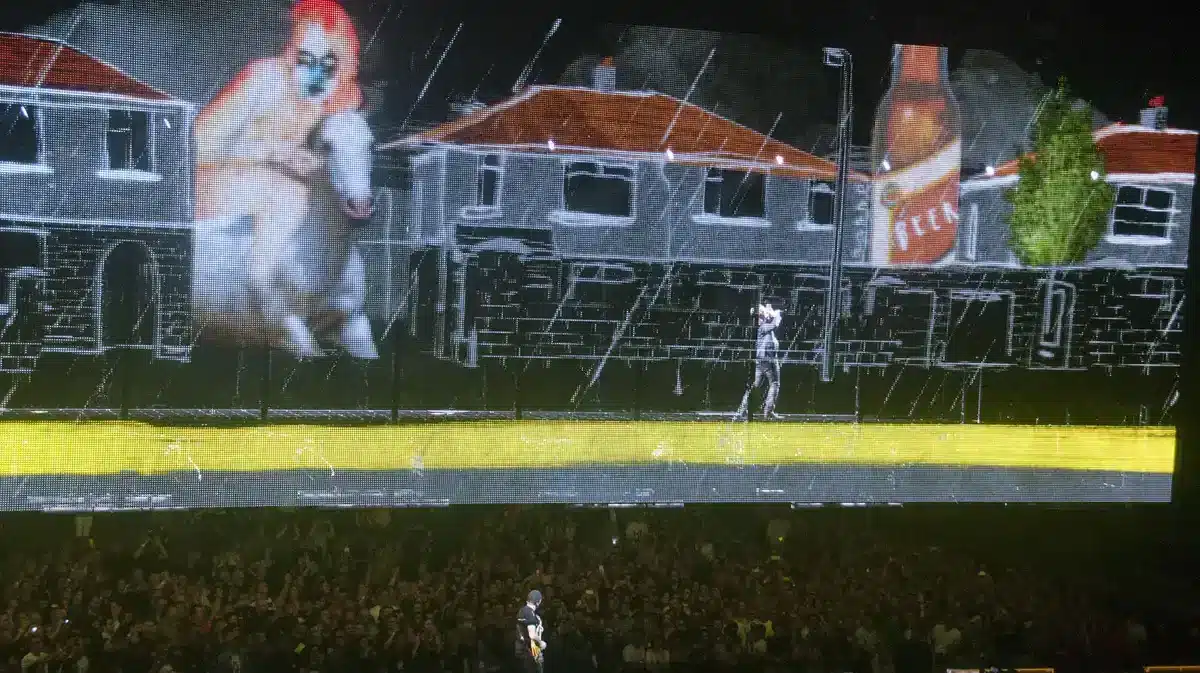
[On] something like “360” [tour], the idea was how do we do a stadium show where we connect with everybody in a different way and make the structure so large that it doesn't become a silent obstruction? How does this thing become the most insanely connected experience? Not how do we make the biggest structure ever?
That's never the starting point. The starting point is how do we connect with more people? So that was “Innocence + Experience” and “360.” And [the] “Joshua Tree” [anniversary tour] was a very simple brief: “We're going to go out and do the Joshua Tree. How do we make it the most beautiful filmic experience of Anton Corbin's landscapes that we're filming in super high-definition?”
In 2017, we did the first “Joshua Tree” [tour] — a screen of that scale with that clarity had never been done outdoors. The biggest screens had happened, but there were never that resolution, an 8K screen.
So then coming into this one [the Sphere], as you said, the difference has always been that we've always had a story we want to tell and then we develop a structure that allows us to show it. And because most of [U2's] shows normally are tours, a lot of the infrastructure, like the PA, the lighting and screen, becomes the sort of sculptural scenic device, like, How are we going to build the show to represent the story we're trying to tell?
But here, the lighting was sort of put in, but the speakers and the screen is all part of the building. So that wasn't something we had to contend with. So then we have a new issue: How do we create the intimacy that the band requires?
And then the massive scale, when do we switch the screen on? When do we switch the screen off? What is the journey through the album [Achtung Baby]? Do we play the album all in one go and just hit people over the head with what is quite an intensive album? Do you do act one, do a sort of intimate bit, and then act two?
Songs of Surrender's impact
What happened was last year and through the pandemic, the band created an album called Songs of Surrender, and it was 40 songs from the archive that were sort of reworked, they were turned into more stripped back, more acoustic [arrangements]. And in some of the places, the lyrics were changed to represent where the band was as people. [Now that they're] older in their career, [they] reflected on some of the things they may have said when they first wrote the song.
So that album was really interesting and then Bono wrote a book called Surrender: 40 Songs, One Story, which we did a book tour for last year. And so he was amazed and we were all amazed by that show and by how it was to hear those songs stripped back and intimate. And what that meant was we then [started] thinking, Well, we're going to go to the Sphere. We know we want to do Achtung Baby, which is very big, but how do we actually also get some of the essence of what [Songs of] Surrender was?
And this building, as well as being an amazing screen, which everybody is aware of, is also an amazing sound experience. It's like being in the recording studio. There's 18,000 speaker boxes, they're everywhere. They can pinpoint sound to each seat in very specific ways.
So everybody got very excited about not only would it be the most fabulous visual experience, it would also be the most intimate sonic experience, which for a band that is used to being heard in sports arenas, [there is an] echo and [it] gets a bit mush, this was a really exciting thing.
Conceptually, that's how the show came around.
Brian Eno's turntable
And then the other thing that happened, which explains the design of the stage, [is] Bono has, in his living room, in Ireland, a Brian Eno record player, which is a beautiful, illuminated object. Brian Eno [is] obviously hugely influential in the band's recording history and learning and teachings.
So there's this record player that just sits there and it shifts colors constantly. There's an algorithm that generates the colors. And Bono was obsessed with this thing. There's a small Sphere in Burbank, which they've built as a quarter-scale towards the big thing. And what it's used for is to show people what it would be like to be in the Sphere before they'd finished building the Sphere.
And so we went in there and we played with a whole lot of different content to see how it makes you feel: Does it make you want to fall over? Does it too fast and you just get dizzy? What kind of movements can camera work do before you feel ill watching it?
One of the most amazing things was just turning the screen blue. And there's an artist, whom I've forgotten the name of, that does these sort of artworks with very specific light. And somehow, the serenity of that blue light, plus the thoughts about Surrender made us think, Wouldn't it be beautiful to try and get this pure color from the record player?
Therefore, if the stage was the record player, how could that work conceptually? Because we didn't want to just have a stage that was like any other rock show where you have a sort of stage and a thrust and a B stage. We've done that. So there was something really interesting about being very specific.
And actually locking the band down onto this slab that meant that they could be on the circular area, which is a bit more intimate, or they could be on the square area, which is a bit more open. And then the audience would be wrapped around them and then they could address the whole room.
That's where the record player idea came from. And then it was there to deliver color. And what was also very important is a way of focusing the audience's attention in this very big room to this smallish stage because usually a band is silhouetted against a big screen behind them. That's not so much the case in the Sphere because the Sphere is so steep. So a lot of people were looking down towards the action. So it made sense to make the floor video screen as well.
Instead of thinking of it as a venue that was going to play content for the show, we wanted to think of it as a series of artists that would create art for the biggest canvas in the world. And so John Gerard, who did the flags, ILM, who did the Vegas [backdrop], there's a guy called Marco Brambilla, who did the beautiful Vegas montage treatment studio, did a lot of the stuff, and then the final section is the sort of Nevada arc, which is all the creatures — there's a few other artists in that.
These artists create these fabulous artworks. We wanted the stage to also feel like an art piece, like a sculpture. So that's where all these layers of thing came together.
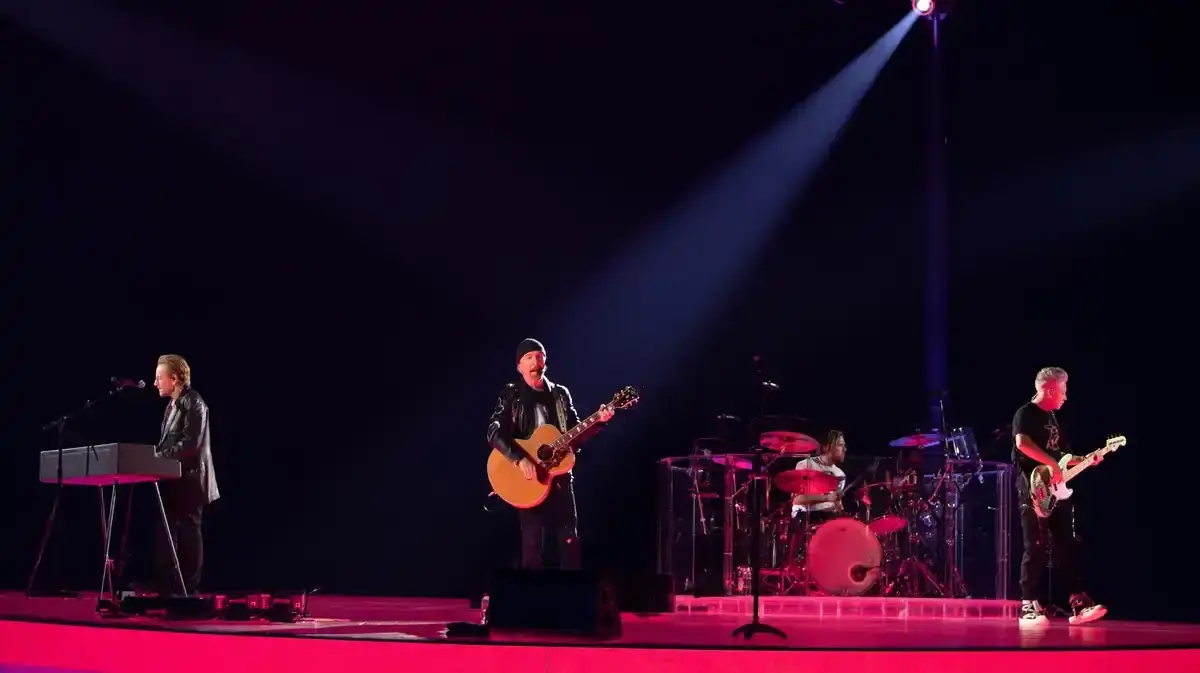
CP: I do love Songs of Surrender — I liked hearing these songs done in a different way. I didn't realize how much of a part that played in the setlist for the Sphere. Was the set going to be drastically different before Songs of Surrender came out?
RL: The conversation about the Sphere and Songs of Surrender were a similar time. So in the same meeting where we first chatted with Bono about the book was also a meeting about the Sphere. They were sort of side-by-side.
And so there was a big debate, as there always is with these things, of how much of the intimate stuff we should be doing in this amazing space station. How much can we do before we annoy the audience with the volume and the visuals?
After a lot of going backwards and forwards and exploring different song orders, it was decided that the first half and the second half would be really great as sort of the beginning and ending of the show through the sort of premise of Achtung Baby with a section in the middle, which was loosely going to be Songs of Surrender.
I don't know if you've been following the setlist, but those songs change every few days. So there's a suite of songs, I don't know how many they've done now, but certainly originally there were two nights worth [arranged] and maybe there's three or maybe there's 10, I don't know, I've not been following the setlist fully.
But they've explored some deep cuts and sometimes they have a guest up and that middle section feels like a club and it's amazing. The venue is so vast, but at the same time, it can feel so intimate.
CP: It sounds like the band was really on board with having a smaller stage, but were there ever discussions of having something bigger because you do such a larger than life band?
RL: What's funny, which again, we may have masked in our cleverness of years of designing these stages, is the fundamental relationship between the drummer and then the musicians is always the same.
Now, the big difference here is, of course, the drummer wasn't Larry. Larry has always been in the center. And with the ability of it not being Larry and it being Bram [van den Berg], we immediately felt that having a drummer in the center would block the video screen. So we shifted the drummer to stage left to clear that center shot.
It's really important for the way the band interacts, that Adam and Edge and Bono and the drummer are within a certain amount of space.
Weirdly, that circle is actually a little bit larger than their normal thing. If you look at the “Innocence” [+ Experience tour] stage, the stage is flat and then it stepped up [on the side]. And when they were on the B stage of “Innocence,” that circle was a lot smaller.
So, the circle of the circle stage part of the square is actually a little bit bigger than they are used to. It's certainly not deeper because it's a circle. Normally, it would be a rectangle. Even on “360” and all of the arena shows, actually, that relationship is always the same because that's how they play.
And the space that would traditionally be a catwalk or a B stage is the space and the distances that you walk around the square. So whilst it looks small, it looks small because it's in the context of a massive room. It's still as big, if not larger, than any arena stage they've ever had. And actually, I'd say, even on,”360,” the stage area wasn't much bigger. The sort of catwalk around The Edge was, but the fundamental main stage was actually not much different.
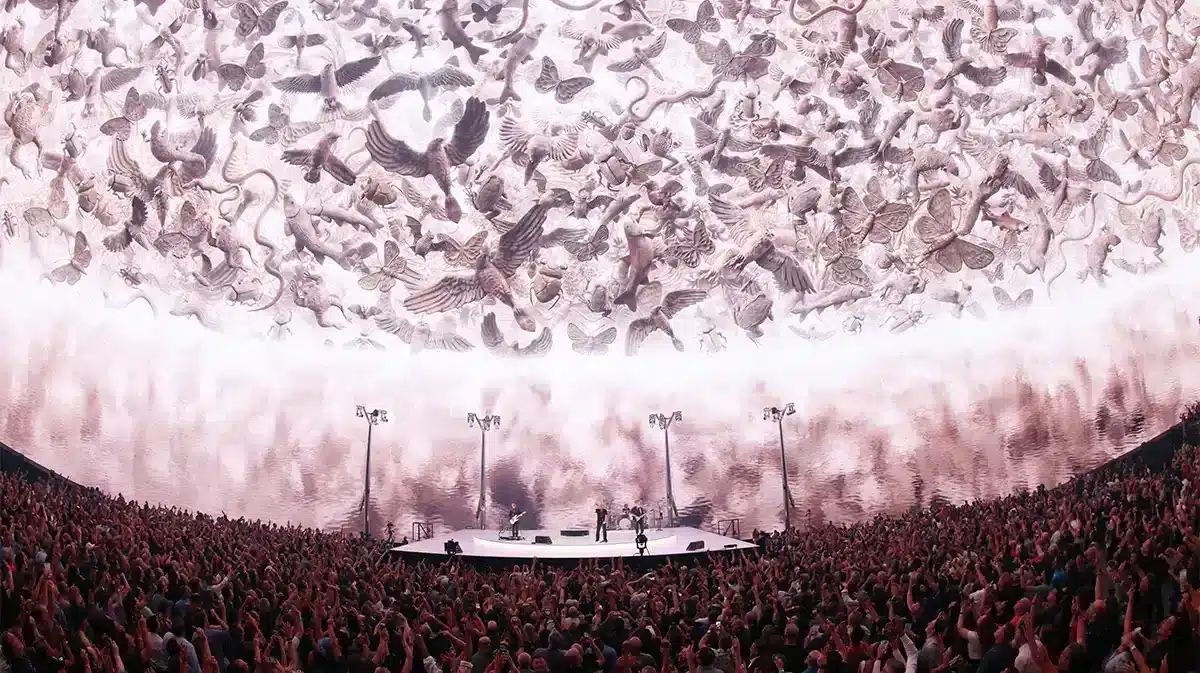
CP: I love that Bono has a little stage for “Zoo Station.” Is that supposed to be like a turntable needle spinning?
RL: Yeah, it's the center of the turntable. It's the sort of black hole that you have in the middle of a turntable.
Bono always has a moment. In the last few shows, we found different ways of him using his mic stand. So [on the] “Innocence” [tour], there was a light bulb that he really uses in [this] punk way. On “360,” he had a hanging mic that he played with and interacted with, which was really beautiful.
On “Joshua Tree,” the mic stand was was connected to the stage so he could use it and swing on it and lean into it a bit like he does on the revolve [in the Sphere].
Because we wanted to have the feeling of the record player without rotating all the band — it would be silly because they'd be pointing at the wall most of the time and cabling and complexity of all those kind of things — we wanted Bono to be able to be sort of interacting and it gives him a way of, I don't use the word choreography because it's not choreography, but it allows him to move in a way that allows him to portray the character he's trying to portray at the beginning of “The Fly” in [“Even Better Than the] Real Thing” and the songs where he's sort of on it and using it.
It's interesting and it gives him a automatic movement that allows for him to interact with that mic stand. So that was why it was sort of put there. And again, even at the beginning, we thought maybe it would only be there for one or two songs. And in the end, we kept it and we used it a few times and each time he used it, it felt different.
CP: I imagine you had to be in the loop with U2's setlist meetings because the stage is used not just to illuminate in those beautiful neon colors like you noted, but even during “Acrobat,” there are specific visuals on the stage. So how involved were you with were you those discussions as the show was coming together?
RL: I mean, a lot of artists work like this, but especially U2, we're not just a set designer sitting in London designing a set for a show that happened in Vegas. The creative team, which as I said earlier, is a team [of] about 10 people. The intimate team is myself, Willie Williams and Es Devlin.
And together, we do all of our bits, sometimes more specifically on the narrative of the show. Willie, because he also has Treatment Studio, is dealing with the video element of the show. I'm dealing with the physical elements of the show and how it all works.
So we all have our bit, but we sit together and as the setlist has developed with the band and Willie, we are sketching, we’re making mood boards. And then we test it all.
We went to Burbank ahead of the Sphere being finished and we built a quarter-size stage so that we could test these things. So we had a really good idea before we get into what we call “production rehearsals” of what the show is going to be.
We're all very actively part of that. And, also, the other element of the set which I've not talked about are the lampposts. There's four custom chrome lampposts that are sort of a bit like an oil derrick meets a robot meets the future. And we needed a way of getting lighting into the thing, but we also wanted the slight characterization that these things lean in and out at different times, just to add a little bit more kinetic and very minimal thing.
The stage is very slightly raked for practical reasons, because we have people underneath, you [also] want to see at the front, but also because it added a little sense of energy, a sense of the band being on the edge of their tiptoes.
Whilst it may look quite simple, it's a very complicated stage. It has speakers incorporated into it, a lot of custom video to make the circular LED, the backline guys underneath that needs to supply the guitars and the bass changes all the way through the show, special effects, the lift at the front that Bono uses to come down and get into the audience for that more intimate moment, the little revolve. So there's some little things. It's not the most complicated stage we've ever done, but it's not simple, either.
CP: I know Bono goes down to the floor for a little bit of “Until the End of the World.” I believe he started doing that after I saw the show in September, and I was curious if the band was concerned about missing the connection with the audience given the Sphere doesn't have a B stage.
RL: For sure — everything's a concern until the opening night. [chuckles] Even when it was a building site, we put a little platform where the stage height would be. We taped out on the floor where the stage would be. We walked it with the band. We sat in seats. We shouted across the room to feel how it felt. We were really testing the theory.
There were designs that we explored, both before and after the record player was conceived, where we explored additional catwalks and things, but we kept coming back to the purity of the art statement was really important and the intensity of the performance of these people playing this music would do the trick.
And as you said, when you're in the Sphere, if you're on the floor, you have a certain proximity. And if you're far back, you have a very different experience because you're seeing the screen. But that's how they felt was the right way to do it.
He [Bono] does break that fourth wall coming down that lift and going up to the barrier. But I mean, I'd have to talk to the band having now done 40 shows and if in hindsight they felt that having a place to go [would have been] even better. But for the show that we're doing and the story we're telling and the visuals we're showing, I think it works really well.
CP: I know on the “Experience + Innocence” tour, one of the coolest parts was when The Edge and Adam walked out into the crowd and went on their little stages. When you said ideas of “catwalks” were thrown around, was it something like that?
RL: It could have been that, or it could have been like “Innocence” where you had the runway going right down the middle of the room to the round stage.
Often in more regular shows, you have a main stage and then you walk down a runway or a catwalk to another place and then you do a sort of intimate set. But again, that wasn't what this show is about. The show is about the intensity of this focus point.
And also, [with] the sight lines, you can't go much further than when stage is and still see everybody. So we maximize that and we explored do you want to go left and right a bit more? But in the end, you're not physically getting emotionally closer to people because the room is so vast — and why bother? You're much better off keeping that attention.
CP: U2's Sphere shows feature a tight setlist, with visuals synced to the songs. But if the band goes long on a song like “Zoo Station,” what happens?
RL: The band is playing live the whole show. Some songs they play along to a click which means we can absolutely time the music and videos in sync along with any additional sounds and effects.
Some moments are completely free-flowing and here the video operators will either have multiple cues that loop to make the sections of video sync with what the band plays.
For live cameras, all the switching and choice of camera is done live by the video director. For the colors of the record player, the colors are on an algorithm generated by Brian Eno. This means the colors scroll at their own rate separate from the music and so each night is completely different.
A combination of all these techniques is used by the video team at “treatment” and the artists who have made the content and by the live camera team headed by Smasher, the director.
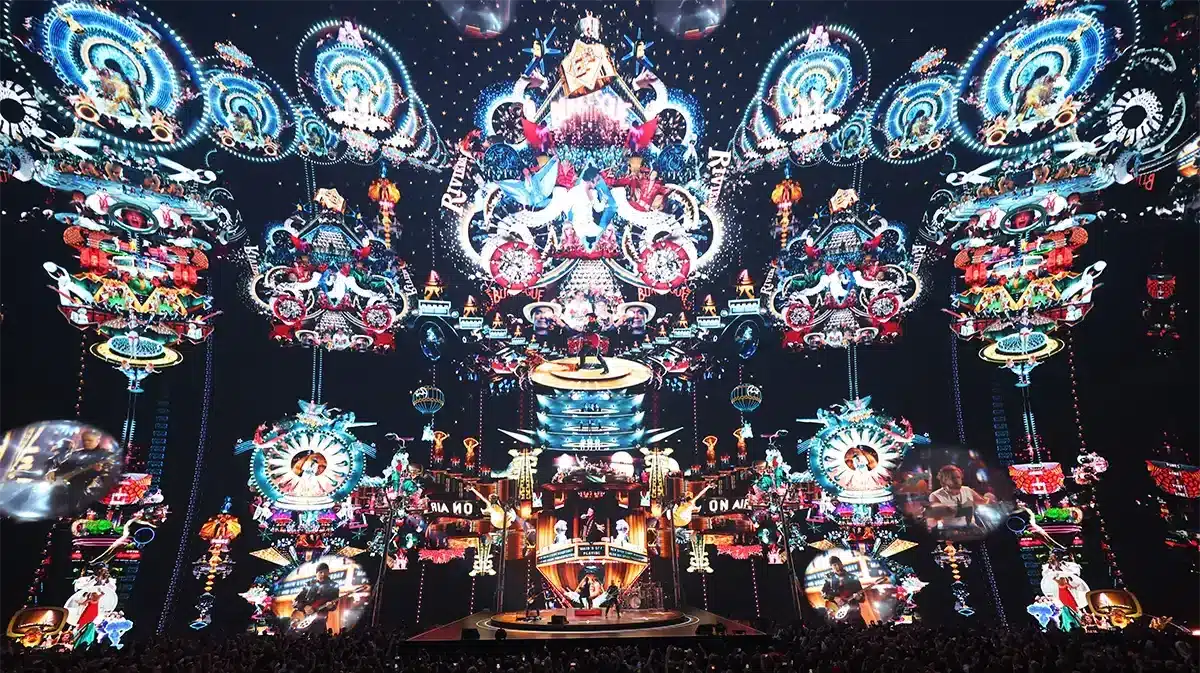
CP: You've worked with a lot of artists, not just U2 like Beyoncé. Ther'es some talk about her doing the Sphere, whether or not that's true, I don't know. You helped design U2's show, but they're a much different kind of act — they're a quartet rock band. Beyoncé, she's the attraction, but she usually has dancers akin to a Taylor Swift, so you have a lot more going on and I'd be curious as to how other artists can use the venue going forward?
RL: I mean, the simple answer is there are many things you can do in that building that we didn't do with U2.
Whether that's the shape of the stage, some of the extra infrastructure that the building has. There's one moment in the show where we have a rope and he [Bono] swings on the rope with the balloon. But that's one hatch — there are about 80 hatches that you can use to put things through.
Where the stage is, you'll have noted the moment in the show where we switch the lights on behind the screen, there's one moment [at] the end of [“Who's Gonna Ride Your] Wild Horses,” and that's actually the size of a regular Vegas stage, and you can take out a section of screen and build a show inside the wall.
So I'm not saying that [for] a specific artist, whether it's Beyoncé or Taylor Swift or anybody. There are many ways of doing a show in that room. And I think we took a specific route with U2 that was about them looking like they were on the record player with a relatively respectful stage that celebrated them, the music, and the video surface.
But another artist would do it differently. They could have props coming out from backstage or they could have a much bigger stage or wider stage or taller stage… there's many ways of skinning the cat.
I think it's going to be exciting to see what other artists do in there. And certainly we would be excited to [explore more ideas]. We've got thousands of ideas of what we could do in that room. It's not just one thing.
CP: Congratulations on the Sphere show and all of your work with U2. The “Innocence” tour was my first concert and I want to get a tattoo of the logo.
RL: Well, it's funny that you say that. Both “Innocence + Experience” and “Joshua Tree” and this show, all of those stages and logos have been designed by us. The iconography of the stage and the artwork are synonymous. So the “I” and the “E” and the idea of the way that they were linked with these yellow lines, which you're going to tattoo on your arm, was an idea that was something we did in the stage and was the logo [and] vice versa.
They're both developed at the same time. The logo for U2:UV is the record player and the record player is the logo and the logo is the record player. They're both conceived in tandem. And there are four key artworks of the record player in multiple colorways based on the fact that this isn't a static logo, and when the campaign first came out, there was an animation that ran through some of the cyclic colors of the logo with a Brian Eno drone tone underneath to sort of nod back to Brian.
And then if you saw any of the videos of the outside of the Sphere, [those] also echoed the colors and things. We've tried to link these things together to make a holistic idea.
U2 will wrap up its Sphere residency on March 2.

